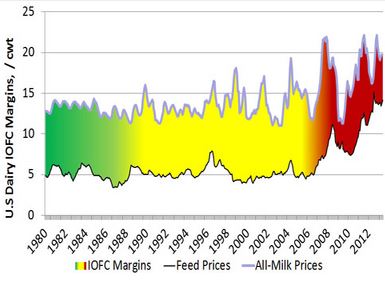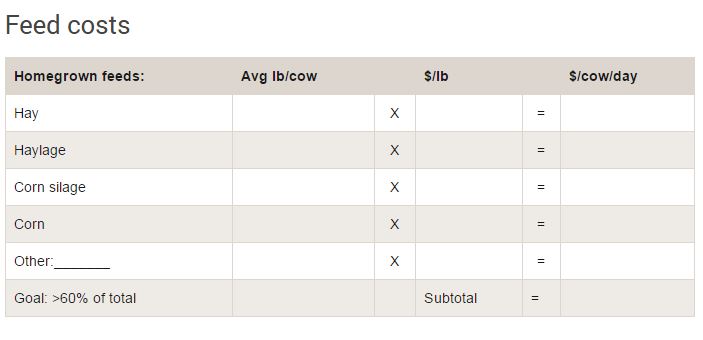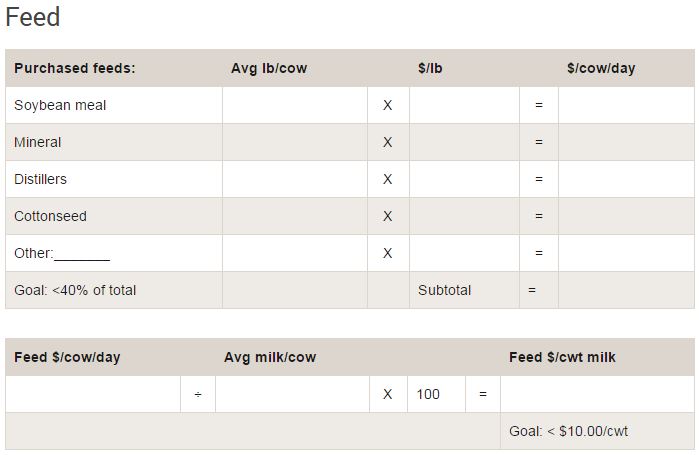



Keeping Feed Costs Under $10 Per Hundred Pounds
New margin protection in the US is placing even more responsibility on farmers to have an even clearer picture of what they spend on feed.In the MidWest, costs can be controlled easier than in other regions, write University of Minnesota advisers.
But keeping feed costs below $10 per 100 pounds of milk produced is still important. And, its not for the milk herd, but the whole herd you need to account for.
Doing so is important, because, as figure 1 shows, milk price and feed cost margins can become very tight, writes dairy extension educator, Jim Paulson.
What Are You Feed Costs?
Consider some quick calculations: For every 100 cows, you have 80 milking and 20 dry cows as well as 100 calves and heifers. Your feed costs are $.10 per pound of dry matter for the milking cows and they eat 50 pounds of dry matter per day and produce 80 pounds of milk per cow per day.
That equates to $5.50 per cow per day feed cost or $5.50 / .8 cwt. = $6.88 per cwt of milk in feed cost. But that is just for the milking cows. If we add $3.00 per head of average heifer feed cost per day and $3.00 per head for the dry cows, we have an additional $360.00 per day in feed costs. That adds an additional $5.63 per cwt in feed costs. We now have an actual feed cost per cwt of milk produced of $12.51.
Home Grown Feed
As was discussed in a previous article by Jim Salfer, our feed costs in the Midwest can be lower than the national average due to the fact that we grow a large percentage of our own feed.
Mr Paulson writes that it is valuable for your business to know what your actual cost is. It may not be simple to arrive at some values of home produced forages.
Knowing cost per year, actual yields, and allocated costs in addition to land cost can be challenging. One of the difficult factors in calculating feed costs is coming up with an accurate cost or value of your home grown forages.
Your cost to produce your forage may have little to do with current market price of hay or corn.
You may be able to grow corn for silage or alfalfa and grass for forage at a lower cost than you would have to pay in today's market.
This is one advantage to upper Midwest dairies. You are choosing to make your crops a cost center, not a profit center, thereby putting the profit potential in your dairy operation or in the net farm profit if the dairy is your main enterprise.
Being in the dairy business does not allow us a lot of flexibility of enterprises or rotations.





